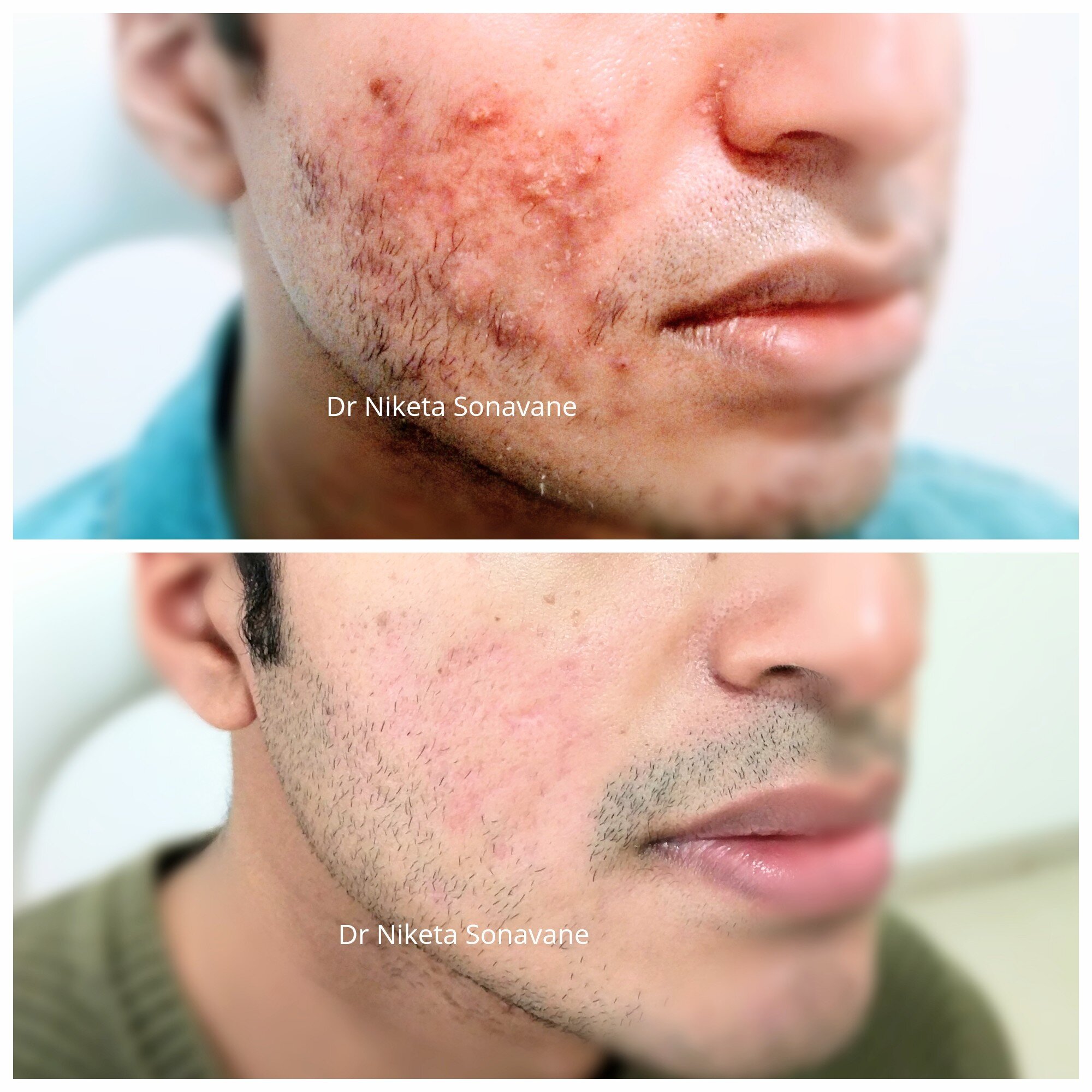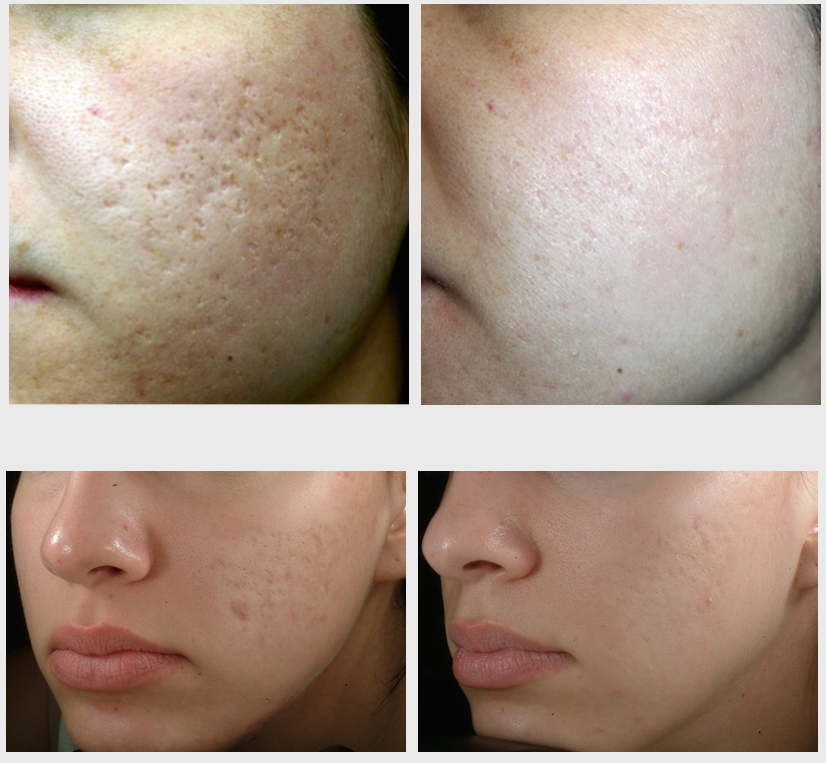Efficient Acne and Acne Scars Treatment: Clear Skin Solutions That Job
Efficient Acne and Acne Scars Treatment: Clear Skin Solutions That Job
Blog Article
Recognizing the Numerous Skin Conditions and Efficient Treatment Choices for Acne Marks
Acne marks represent a complicated interplay of skin problems that substantially effect people' self-worth and general skin wellness. As we explore the landscape of acne mark administration, it becomes obvious that the journey toward more clear skin might include more than just topical solutions.
Types of Acne Marks
The two primary groups of acne marks are hypertrophic and atrophic scars. These marks are further identified right into 3 subtypes: ice choice scars, which are deep and slim; boxcar scars, which are bigger and have well-defined sides; and rolling marks, which develop a wave-like appearance due to irregular skin texture.
In contrast, hypertrophic marks arise from an overproduction of collagen throughout the recovery procedure, bring about raised locations on the skin. These marks are commonly solid and can vary in color, often appearing red or darker than the surrounding skin.

Reasons For Acne Scarring
Scarring happens as an outcome of the body's natural recovery reaction to inflammation and injury triggered by acne sores. When acne forms, it activates an inflammatory feedback, leading to the release of numerous cytokines and growth elements that advertise recovery. This process can sometimes lead to too much cells development or inadequate repair service, resulting in marks.
The key sources of acne scarring consist of the intensity of the acne itself, period of the lesions, and specific skin types. Severe inflammatory acne, such as blemishes and cysts, is most likely to result in scarring due to deeper tissue damage. Furthermore, inappropriate handling of acne lesions, such as squeezing or selecting, can exacerbate tissue injury and inflammation, enhancing the chance of scarring.
Hereditary proneness likewise plays a substantial duty; people with a family history of scarring are at a greater threat. Skin kind and color can influence scar formation, as darker skin tones may experience post-inflammatory hyperpigmentation, while lighter skin may develop atrophic scars.

Therapy Alternatives for Scarring
Efficient treatment options for acne scarring vary depending on the type and intensity of the marks. Normally classified into atrophic, hypertrophic, and keloid scars, these conditions require tailored approaches for optimum results.
For atrophic marks, which are identified by a loss of tissue, treatments such as chemical peels, microdermabrasion, and laser therapy are typically used. These approaches advertise skin revival and stimulate collagen manufacturing, therefore boosting skin appearance. Subcision, a minimally intrusive procedure, can also work by separating coarse bands under the skin.
Keloid and hypertrophic scars can be a lot more challenging to treat. Options include corticosteroid injections to reduce inflammation and squash the scars. acne scars treatment. In many cases, cryotherapy or laser therapy might be recommended to lessen their appearance
Surgical alternatives are readily available for severe scarring, where excision or skin grafting may be necessary. It's essential for people to seek advice from with a dermatologist to assess their certain mark type and talk about the most suitable treatment strategy. Incorporating several therapies typically yields the very best end results, ensuring that each person's one-of-a-kind skin problem is resolved efficiently.
Natural Remedy and All-natural Solutions
Natural solutions and natural home remedy can offer an available strategy for visit the website individuals looking for to enhance the appearance of acne scars. Different ingredients found in the home kitchen area have shown prospective benefits in boosting skin appearance and promoting healing.
Using fresh aloe vera gel straight onto the scars can assist enhance skin hydration and lower inflammation. Honey possesses all-natural antibacterial and moisturizing qualities that can assist in scar healing.
One more effective option is lemon juice, which functions as an all-natural exfoliant and can lighten hyperpigmentation. Nonetheless, it should be made use of cautiously, as it might cause photosensitivity. Oatmeal masks are likewise helpful; their mild peeling can help eliminate dead skin cells while relaxing irritability.
Essential oils, such as tea tree oil and lavender oil, can even more sustain scar recovery as a result of their antimicrobial residential properties. It is critical to carry out a spot test before applying any type of treatment to make certain there are no negative reactions. These natural solutions can be a corresponding method in the journey to diminish acne marks.
Protecting Against Future Scarring
Embracing a positive strategy to skin care can considerably reduce the threat of developing future acne marks. Regular cleansing, peeling, and hydration can assist keep skin health and wellness and stop clogged up pores.
Additionally, preventing the lure to pick or press acne sores is critical, as this can lead to inflammation and subsequent scarring. Rather, individuals need to concentrate on applying topical treatments that promote healing and lower swelling. Components such as salicylic acid, benzoyl peroxide, and retinoids are known for their efficacy in handling acne and decreasing scars.

Lastly, preserving a healthy and balanced diet plan rich in anti-oxidants and remaining hydrated assistances skin regrowth. By carrying out these safety nets, people can significantly reduce their threat of future scarring and promote general skin health.
Final Thought
In final thought, a comprehensive understanding of acne marks, incorporating both atrophic and hypertrophic types, is essential for reliable therapy strategies. Customized interventions, including specialist treatments and natural remedy, can considerably enhance skin appearance and structure. Preventative steps also play an important function in minimizing future scarring. Appointment with a skin specialist stays vital to devise individualized approaches that think about specific skin kinds and scar intensity, inevitably enhancing the efficacy of mark monitoring methods.
Acne marks represent a complex interaction of skin conditions that considerably impact individuals' self-esteem and overall skin wellness. The two main classifications of acne marks are hypertrophic and atrophic scars. These marks are more classified right into 3 subtypes: ice pick marks, which are deep and narrow; boxcar marks, which are bigger and have distinct edges; and rolling marks, which create a wave-like look due to irregular original site skin texture.
An extensive consultation with a dermatologist can help figure out the most appropriate treatment, view taking right into account the person's skin type, mark seriousness, and total skin wellness.
Examination with a skin doctor remains crucial to develop individualized approaches that consider specific skin types and scar seriousness, eventually enhancing the effectiveness of scar management strategies.
Report this page